Did you know that kids who read for just 20 minutes a day are exposed to 1.8 million words a year? That’s like having a world of adventures at your fingertips! Let’s look at how words can become magic, and stories come to life. In this blog, we’ll explore some of the best reading activities.
Math & ELA | PreK To Grade 5
Kids see fun.
You see real learning outcomes.
Watch your kids fall in love with math & reading through our scientifically designed curriculum.
Parents, try for free Teachers, use for free
But why is it so important to nurture this love for reading in our little ones? Because reading isn’t just about words on paper; it’s about opening doors to imagination and building essential life skills. So, hop on board as we uncover the wonders of fun reading activities for kids!
Related Reading: Ways to Build Pre-Reading Skills in Kids
4 Reasons Why Reading Activities is Important for Early Learners

Imagine the first day of school. Little Timmy walks in, wide-eyed and curious. His journey begins not just into the world of education, but into the world of words. Early literacy, the ability to read and understand words, is like a superpower for kids, and here’s why it’s so crucial:
1. Building strong foundations: Early literacy is like the strong foundation of a house. It’s the starting point for everything a child will learn.
2. Vocabulary boost: Think of words as building blocks. The more words a child knows, the bigger their vocabulary becomes.
3. Comprehension magic: Reading isn’t just about knowing words; it’s about understanding the story. Reading activities teach kids how to make sense of sentences and paragraphs, which is like solving puzzles in a favorite game.
4. Cognitive gymnastics: Reading is a workout for the brain. When kids read, they’re like little mental gymnasts, stretching their thinking muscles.
Related Reading: How To Make Simple Sentences For Kids (Activities & Examples)
16 Playful Ways to Cultivate Reading Skills in Kids
“Mark Twain once said, ‘A person who won’t read has no advantage over one who can’t read.’ These words encapsulate the profound importance of reading in our lives. Now, as we delve into the our list of reading activities, we understand that it’s not just about the ability to read; it’s about the magic that unfolds when we embrace reading as an adventure.
1. Reading Through Art
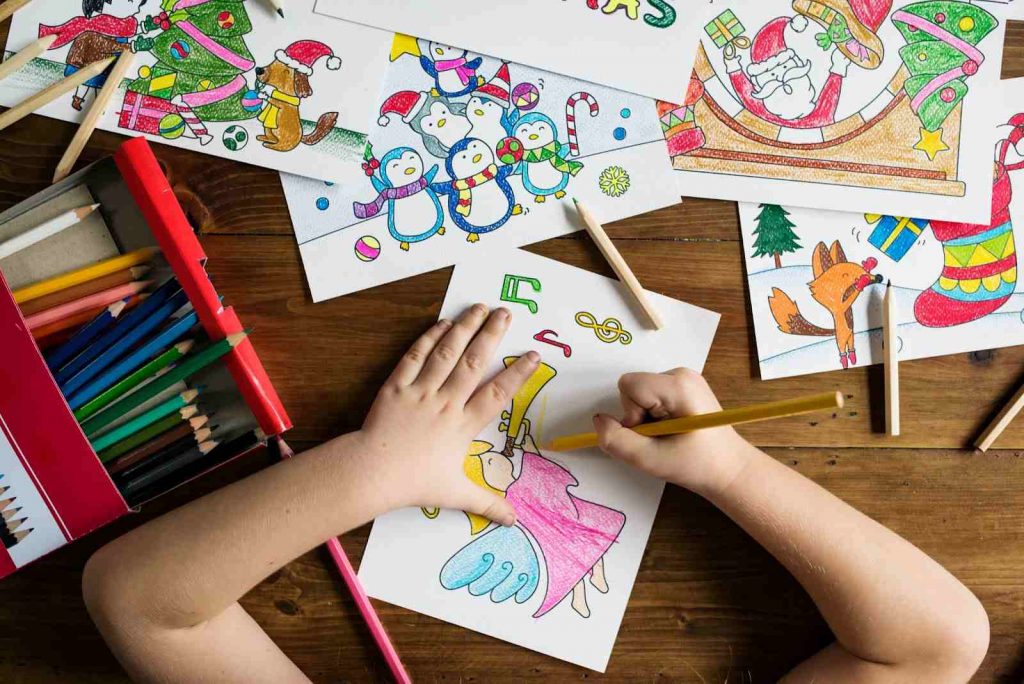
Encourage your child to express their understanding of a book through art. This activity allows them to visually represent the story’s themes, characters, or settings.
What you need: Art supplies like paper, paint, markers, or clay.
How to do it: Provide your child with art materials and ask them to create artwork inspired by their favorite book. This can be a painting, drawing, or sculpture that reflects what they loved about the story.
2. Audio Storytelling

Transform your child into a storyteller. By recording themselves reading a book, they not only improve their reading skills but also add a personal touch to the story.
What you need: A recording device (smartphone or digital recorder).
How to do it: Have your child pick a book they enjoy, read it aloud, and record their reading using a digital device. Encourage them to use different voices for characters and add sound effects to make it engaging.
3. Book-inspired Cooking

Combine culinary skills with reading. This activity brings stories to life through the senses as children cook recipes inspired by books.
What you need: A cookbook or a recipe related to a book’s theme.
How to do it: Choose a recipe mentioned in a book or one that matches its theme. Cook it together, discussing how it connects to the story.
4. Reading Olympics
Turn reading into an exciting competition. The Reading Olympics motivates children to explore a variety of books and sets reading goals.
What you need: A reading list and a chart to track progress.
How to do it: Create a list of books or reading challenges. As your child completes each book or challenge, mark it off on the chart. Offer rewards or recognition for reaching reading milestones.
5. Traveling Book Club
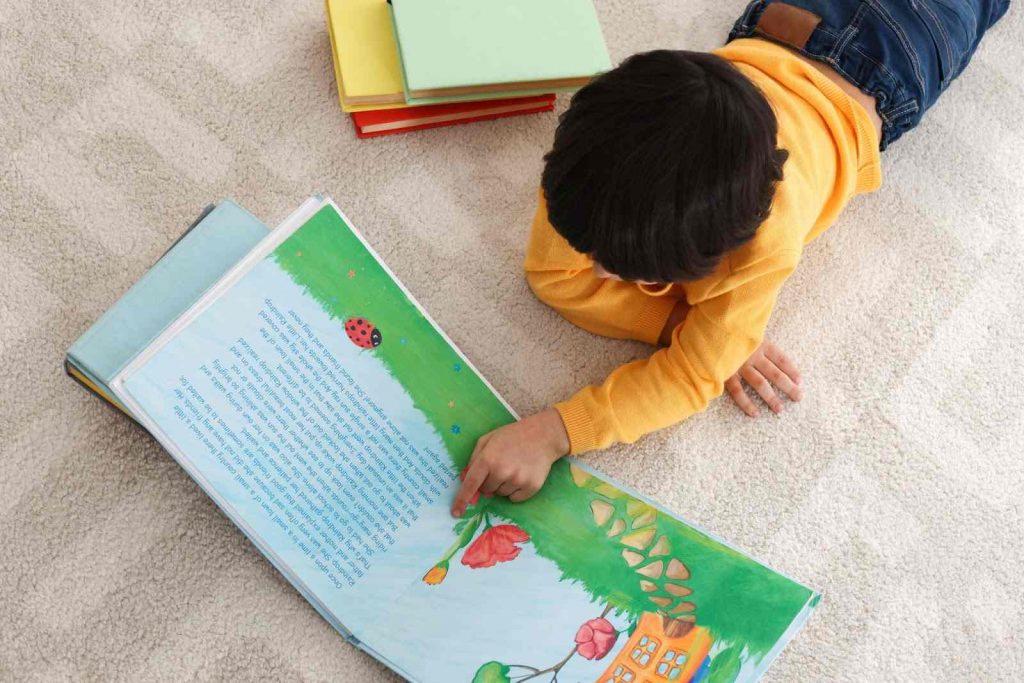
Take your child on a literary journey around the world. Explore books set in different countries and learn about their cultures.
What you need: Books set in different countries and resources about those countries.
How to do it: Select books with settings in various countries. As you read each book, delve into the culture, food, and traditions of the featured location. You can also cook a meal or create crafts inspired by each country.
6. Literary Garden
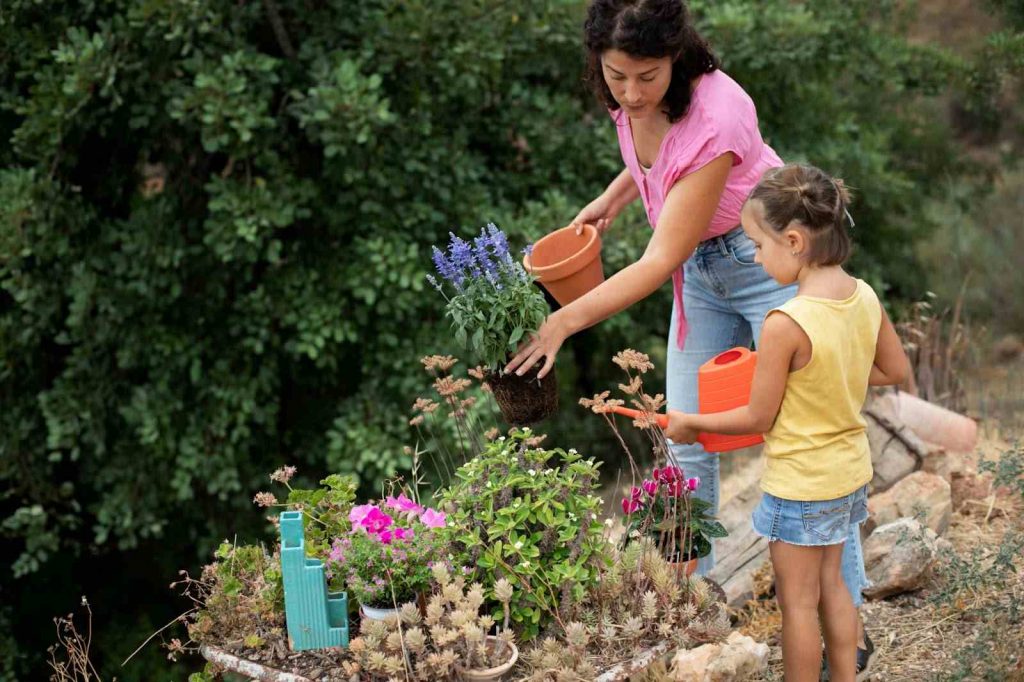
Combine reading with gardening by creating a garden inspired by a book. This hands-on activity fosters a deeper connection to the story.
What you need: Seeds or plants mentioned in a book, gardening tools.
How to do it: Choose a book that mentions specific plants or flowers. Plant them together in a garden or pots, discussing their significance in the story.
Related Reading: How to Make Gardening With Children Fun and Educational
7. Story in a Bottle
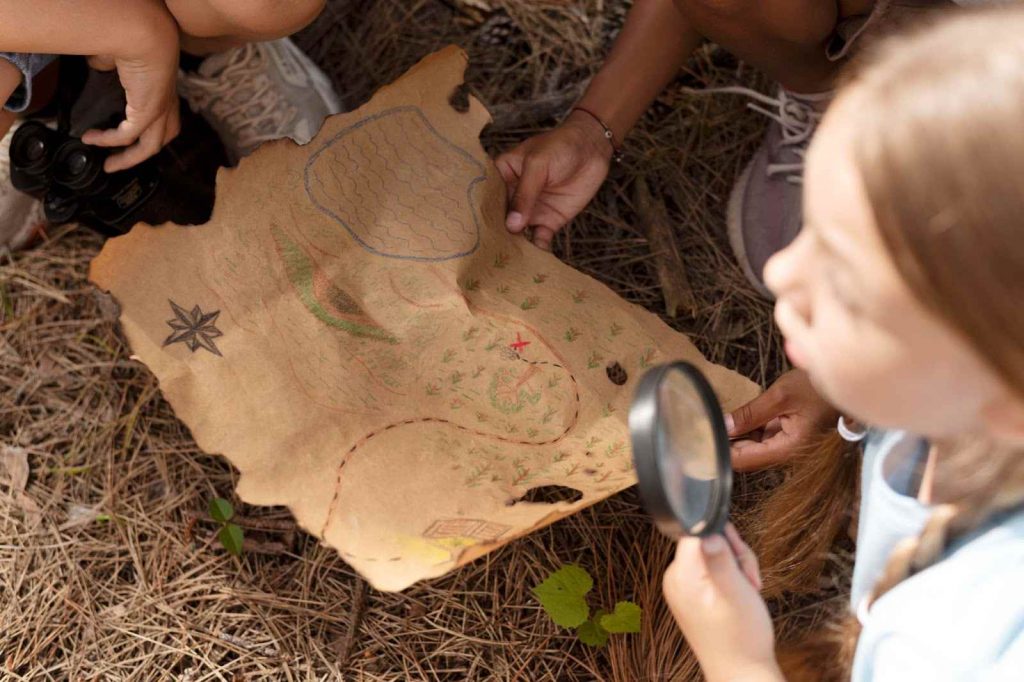
Add a touch of mystery to reading by creating a message in a bottle. This activity ignites curiosity and adventure.
What you need: A bottle, paper, and a marker.
How to do it: Write a short story or a message on a piece of paper. Place it in a bottle and seal it. “Bury” the bottle in your yard or a nearby park, and then create a treasure map for your child to find the hidden story.
8. Book Character Day
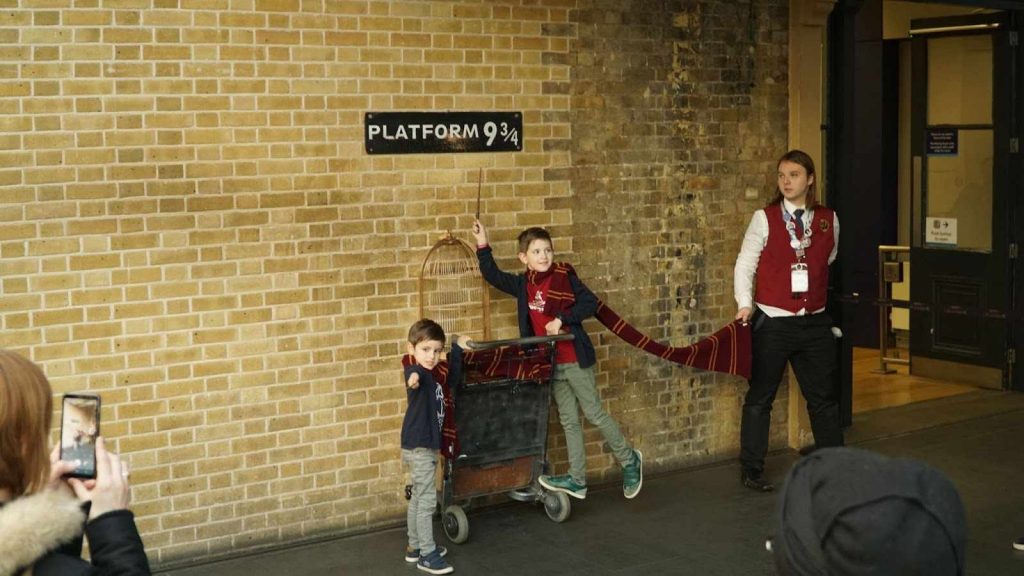
Celebrate your child’s favorite book characters by letting them dress up as those characters and share their love for them.
What you need: Costumes related to book characters.
How to do it: Set aside a day each month for your child to choose a book character they love. Let them dress up as that character and encourage them to share why they admire them. It’s a day of literary appreciation and creativity.
Related Reading: Best & Important Character Traits for Kids
9. Time Travel Reading
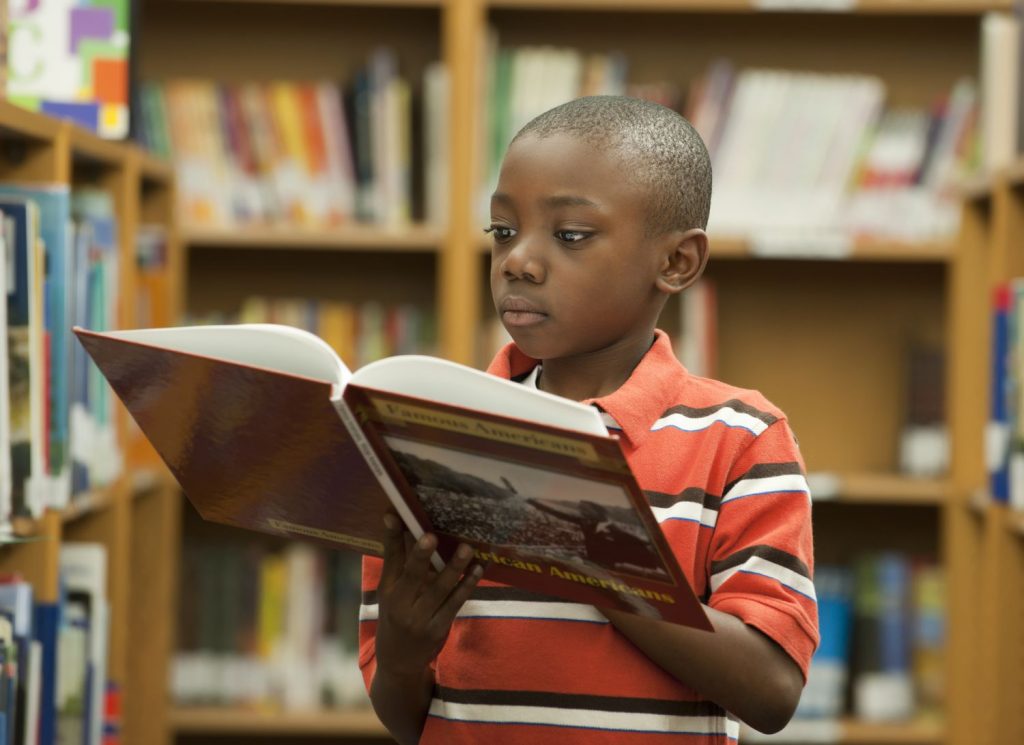
Explore history with books that transport you to different time periods. Then, enhance the experience by exploring the historical context.
What you need: Historical fiction books and resources for historical context.
How to do it: Select historical fiction books and read them together. Afterward, delve into the historical period by visiting a museum, watching documentaries, or doing online research. Discuss the differences between the book’s portrayal and historical reality.
10. Reading Under the Stars
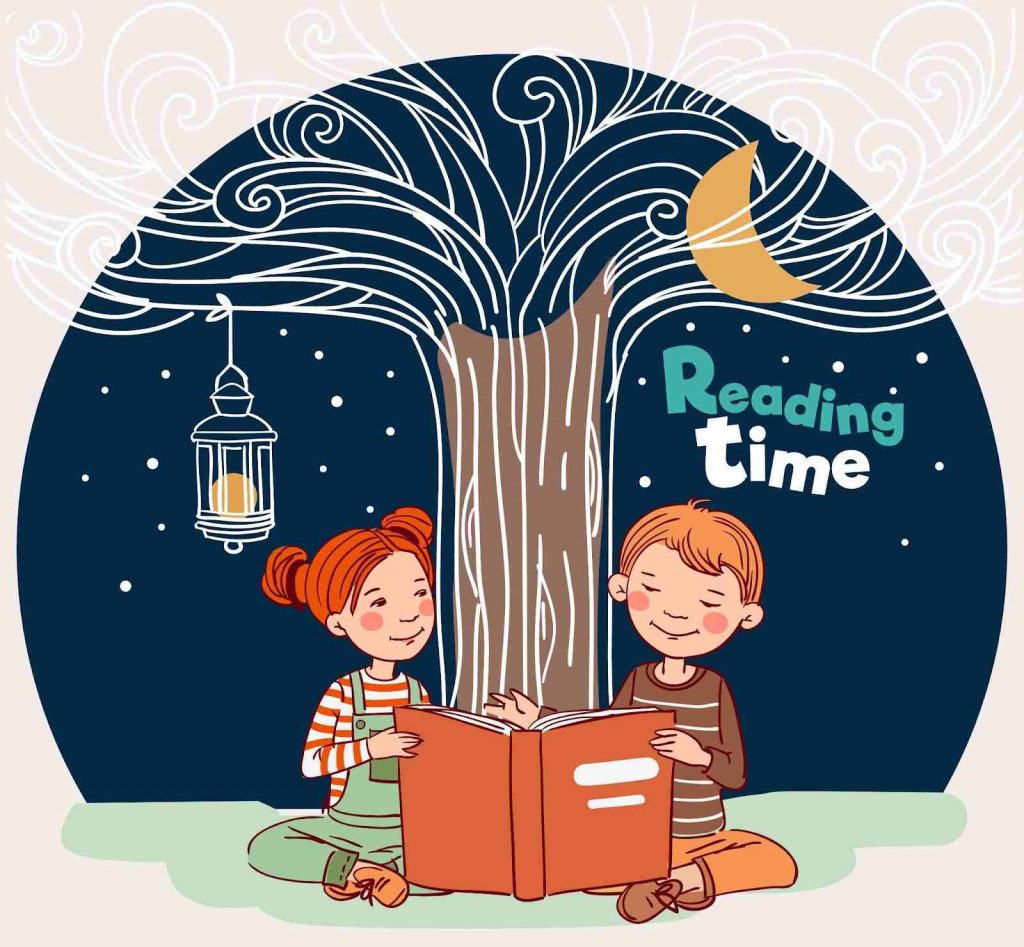
Make reading a magical nighttime adventure by setting up a cozy outdoor reading nook.
What you need: Blankets, pillows, and a flashlight.
How to do it: Create a comfortable reading nook outdoors with blankets and pillows. Use a flashlight to read stories under the starry sky. The combination of fresh air and imagination makes reading an unforgettable experience.
11. Author for a Day
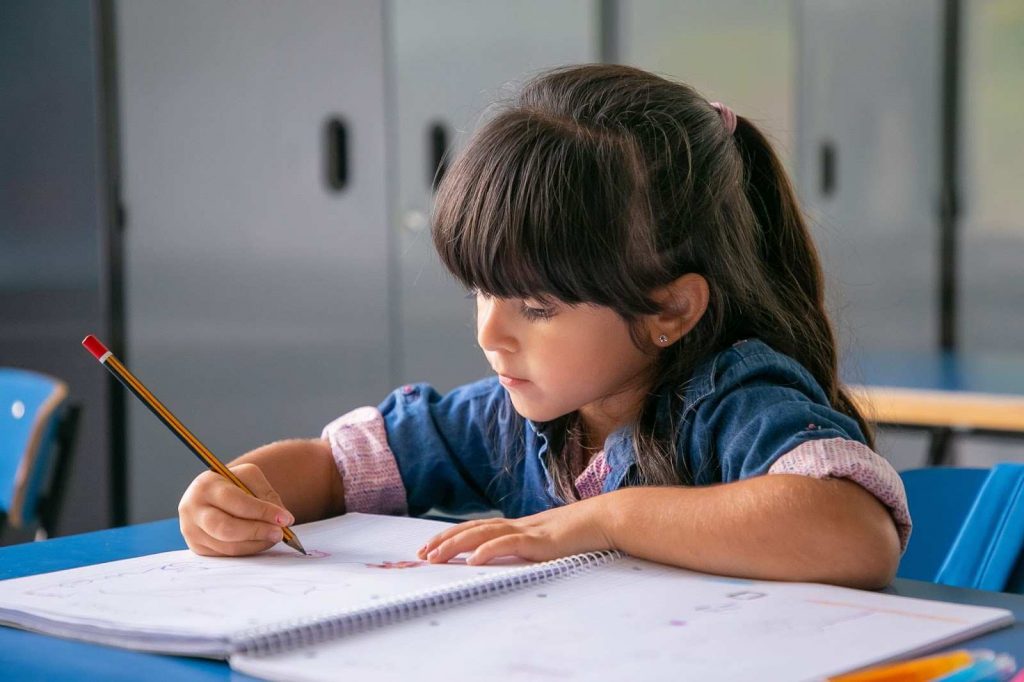
Give your child a taste of the author’s life. This activity encourages them to write their own story or create book-related content.
What you need: Writing materials like paper and pens.
How to do it: Let your child step into the shoes of their favorite author. They can write a short story, compose a poem, design a book cover, or even “autograph” their work. This activity fosters creativity and appreciation for the writing process.
12. Bookish Science Experiments

Combine reading with hands-on science experiments based on themes from books.
What you need: Science experiment materials and books with scientific themes.
How to do it: Choose books with scientific elements and perform experiments related to the story. For example, if you read about a volcanic eruption, conduct a simple volcano experiment. Discuss the science behind it to deepen understanding.
13. Literary Map
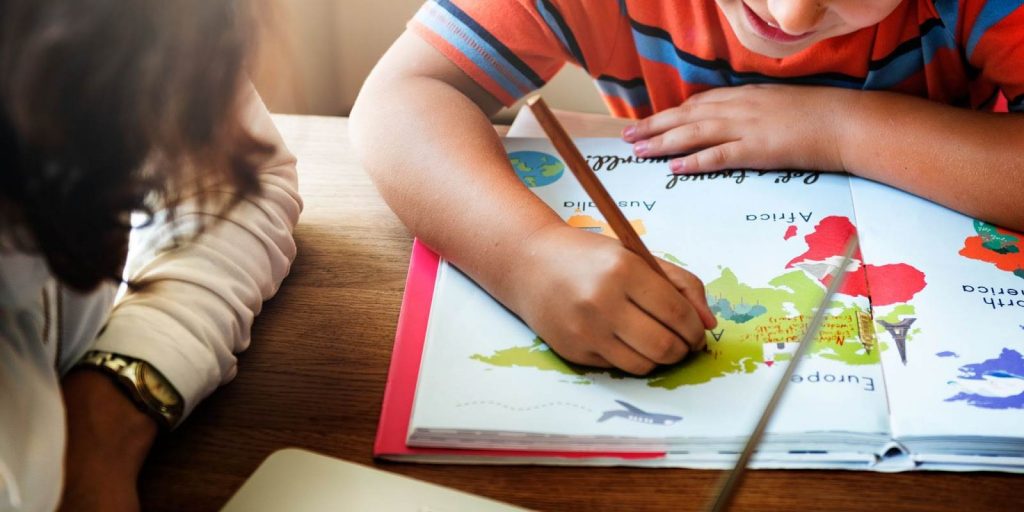
Create a visual representation of a fictional world from a book. This reading activity helps children visualize and connect with the story’s setting.
What you need: Paper, markers, or digital tools for drawing.
How to do it: After reading a book with a detailed setting, work together to draw a map of that world. Include key locations and landmarks mentioned in the story. Discuss the significance of each place.
Related Reading: Best Online Art Games for Kids for Fun and Creativity
14. Secret Reading Hideout

Build a hidden reading space where your child can escape into the world of books.
What you need: Blankets, pillows, and a small space like a closet or fort.
How to do it: Create a cozy, secret reading hideout in a closet, under a table, or in a fort made of blankets and pillows. Fill it with books, and encourage your child to retreat there for uninterrupted reading adventures.
15. Storytelling with Shadows

Engage your child’s imagination by using shadows to tell stories. This activity adds an element of mystery to storytelling.
What you need: A flashlight or a lamp.
How to do it: Turn off the lights and use a flashlight or lamp to cast shadows on a wall. Encourage your child to create characters.
16. Interactive Reading Apps and Games
Bring reading into the digital age with interactive reading apps and games. These engaging platforms can make learning to read a fun and educational experience.
What you need: A tablet, smartphone, or computer with internet access.
How to do it: Explore a variety of reading apps and games suitable for your child’s age and reading level. Many of these apps, including SplashLearn, offer a range of activities that can help kids develop essential reading skills such as phonics, comprehension, and vocabulary. These apps often use gamification techniques to keep children motivated and eager to learn. By engaging with these apps, your child can improve their reading while having loads of fun. Plus, the interactive nature of these tools makes learning feel like play, which is ideal for early learners.
In the world of children’s literacy, making reading fun is the key to unlocking the wonders of storytelling and imagination. These reading activities for kids provide a treasure trove of unique experiences that transform reading into an adventure, a game, and a journey of self-discovery. By engaging in these activities, young readers not only enhance their literacy skills but also cultivate a lifelong love for books. So, pick an activity, open a book, and watch as your child’s world expands through the magic of reading.
Related Reading: Best Reading Websites For Kids
Conclusion
As we wrap up this reading adventure, remember that reading is like a best friend, always there to take you on exciting journeys. These activities aren’t just games; they’re keys to a treasure chest of knowledge and imagination.
By sharing these activities with your child, you’re not only helping them learn and grow but also creating special moments together. The joy of reading is a gift that keeps giving, helping them become smart, creative, and kind superheroes of their own stories.
So, keep turning those pages, exploring new worlds, and making memories through reading. It’s a superpower that lasts a lifetime, and it all starts with a good book and a little imagination. Happy reading!
Frequently Asked Questions (FAQs)
Can these activities be adapted for children with special needs or learning differences?
Absolutely! Many of the suggested reading exercises can be adapted to accommodate children with special needs or learning differences. For example, audio storytelling can be particularly beneficial for children with visual impairments, and sensory-friendly reading hideouts can provide a comfortable space for kids with sensory sensitivities. Tailoring the activities to meet individual needs can make reading even more enjoyable and accessible for all children.
How can I encourage reluctant readers to participate in these activities?
Encouraging reluctant readers can be a challenge, but these activities can help. One approach is to let them choose the books they want to read or the activities they find most interesting. Incorporating their hobbies or interests into reading, such as cooking or art, can also pique their curiosity. Additionally, participating in activities as a family can create a supportive and enjoyable reading environment that encourages reluctant readers to join in.
What are some effective small group reading activities for students in a classroom setting?
Some effective reading group activities include guided reading sessions, where a teacher works closely with a small group of students at their reading level to improve their skills. Another option is literature circles, where students read the same book and engage in discussions, encouraging critical thinking and peer interaction. Additionally, consider book-themed debates, where small groups debate various aspects of a book, enhancing their analytical skills while having fun in a group setting.
























